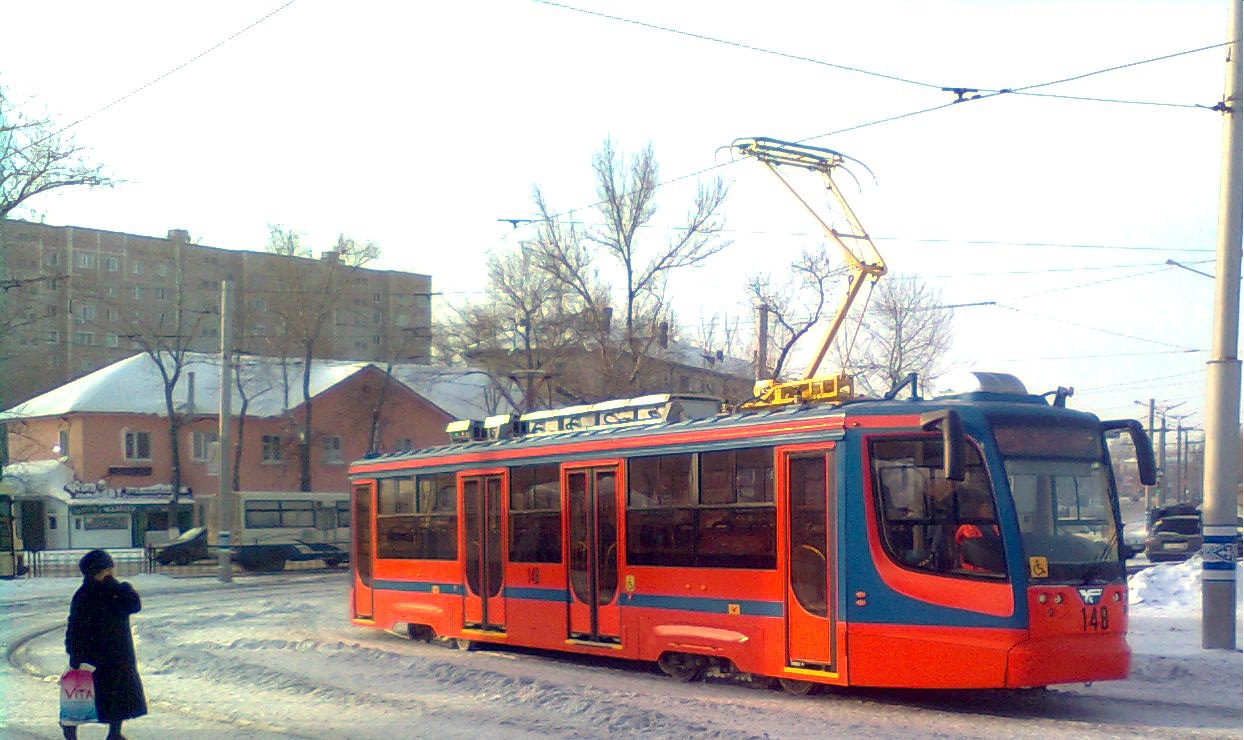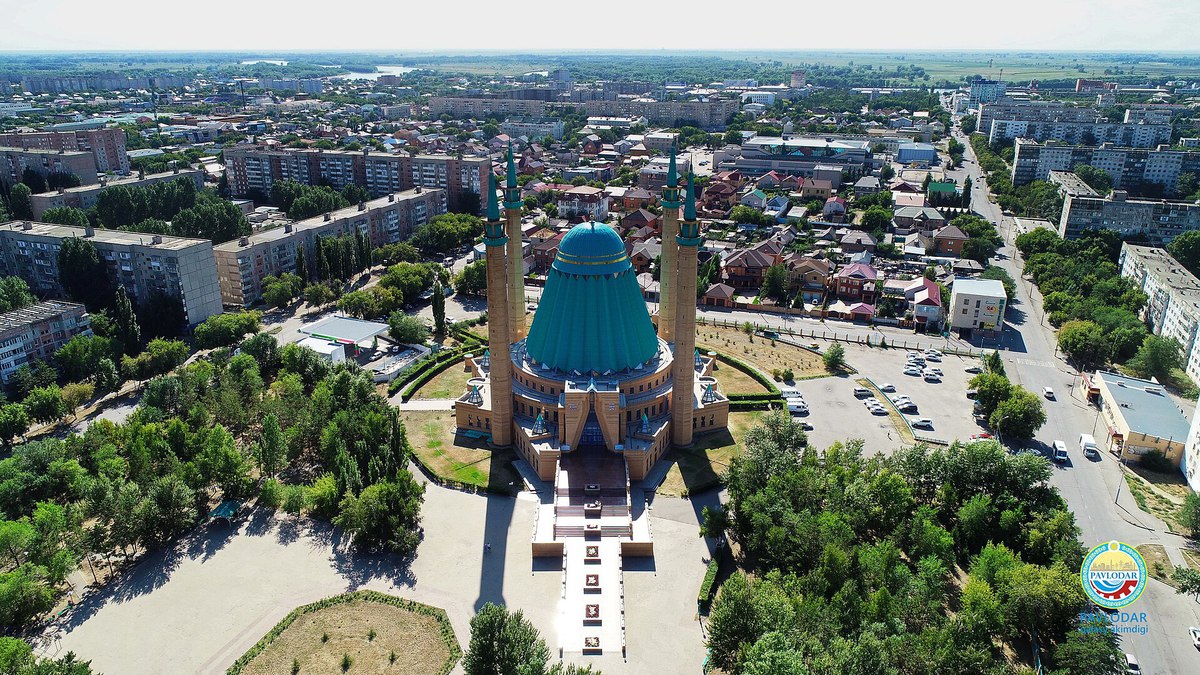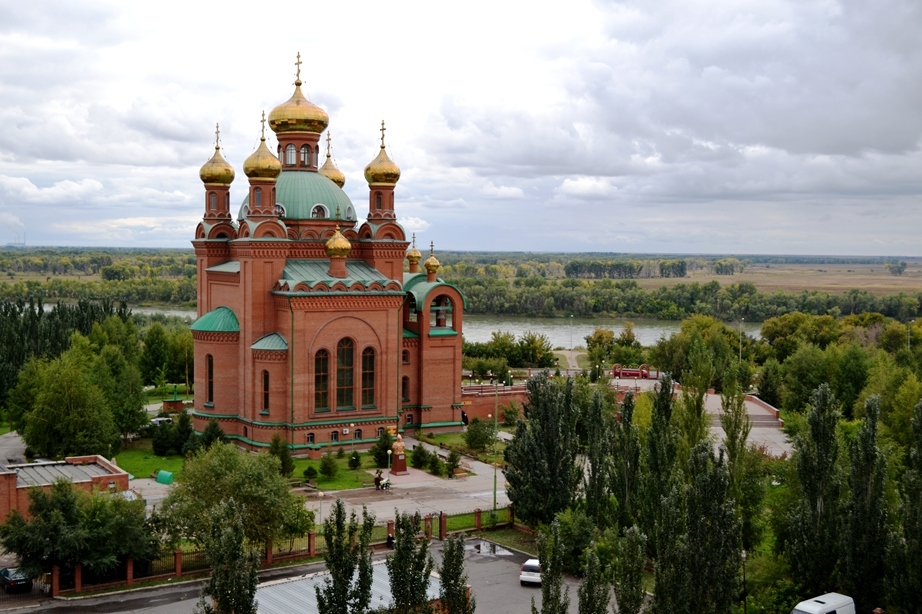Editor’s Note: The Astana Times continues its series of articles, Exploring Kazakhstan, City by City, in the marvelous city of Pavlodar. We are setting out to unveil the rich diversity of cities to bring you closer to the heart and soul of Kazakhstan.
ASTANA – Built as an outpost on the bank of the Irtysh River, Kazakhstan’s green city Pavlodar evolved from a merchant town to the core of the virgin land campaigns to become Kazakhstan’s northern center of metallurgy and just a peaceful city to live.

Irtysh embankment in Pavlodar. Photo credit: Valeriy Bugayev/ortcom.kz. Click to see the map in full size. The map is designed by The Astana Times.
Pavlodar is located in the northeast of Kazakhstan, 450 kilometers away from the capital Astana. It is also the administrative center of the Pavlodar Region.
The city’s main industries include aluminum production, pipe-rolling, electrolysis, oil refining, machinery manufacturing, and cardboard and rubber-rope production. It also has well-developed manufacturing and mining sectors.
Clean and cozy – ideal place to call home
For Aiya Manabayeva, whose fondest childhood memories were made growing up in Pavlodar, the city holds a special place in her heart—even after exploring many other cities across Kazakhstan.
“Since I finished school there and studied through 11th grade, I really associate Pavlodar with my childhood. I love how clean it is. I remember traveling to other cities back in my school days and being surprised at how different they were—busy, sometimes uncomfortable, and even a bit dirty in some areas. But here, it’s different. It’s very clean and beautiful. The embankment and Gorsad (city garden), where all the attractions are, really add to its charm,” said Manabayeva.

Streets of the city. Photo credit: pixabay.com
Pavlodar has a typical continental climate with very cold winters and warm – sometimes hot – summers. Weather conditions often could get as low as 40 degrees Celcius below zero in winter and 35 degrees Celcius in summer.
“I love the weather there because it’s quite cozy in its own way. Summers are warm but not overly intense, and winters are nothing like the damp, chilly winters in Almaty—they’re snowy and beautiful. Even when it’s minus 40 degrees Celcius, you can bundle up, your cheeks might get rosy, but overall, it’s a pleasant kind of weather,” said Manabayeva.
“In autumn, the city is full of beautiful, crunchy leaves as you walk, and there’s so much greenery, likely because it’s near the Irtysh River where everything thrives. The city just has this calm, peaceful vibe,” she added.
Pavlodar’s history
In the early 18th century, during Russia’s expansion into the Kazakh steppes, several fortresses were established along the Irtysh River basin as part of the Siberian Line, including Zhelezinskaya, Semipalatinskaya (now Semei), Ust-Kamenogorskaya (now Oskemen), Yamyshevskaya. In 1720, the Koryakovsky outpost was built on the site that would later become the city of Pavlodar. The Koryakovsky outpost was named for its proximity to salt warehouses by Lake Koryakovsky, where salt was extracted.
In 1838, the outpost was upgraded to a stanitsa (Cossack village), and in 1861, it was officially granted the status of a city designated as Pavlodar, named in honor of the newly born Grand Duke Pavel Alexandrovich.

Pavlodar at the beginning of the 19th century. Photo credit: Department of Archives and Documentation of Pavlodar region
Pavlodar city experienced a significant development momentum during the so-called Virgin Lands campaign under the Soviet leader Nikita Khrushchev in the 1950s and 1960s.
Despite being an ecological disaster in general, the campaign spurred the growth of several cities in northern Kazakhstan, including Pavlodar, turning once-barren steppes into industrialized cities.
In 1955, the first wave of builders arrived in Pavlodar to initiate large-scale construction projects for new combine and aluminum plants. This resulted in improved city infrastructure, including the construction of water supply and sewerage networks, while efforts to address power supply needs were also underway.
Tram-city
Zipping through the streets of Pavlodar, the city trams might not excite locals who use it simply for day-to-day journeys, but for someone outside, it might reveal a travel-related nostalgia for trams’ 20th-century ubiquity.
It might not seem an obvious tourist attraction, but a tram ride through the city is an experience now almost unique to Pavlodar. Kazakhstan’s tram network is now reduced to just three cities – Ust-Kamenogorsk, Temirtau and Pavlodar – the latter being the largest. The total length of the contact network is 89 kilometers.

Pavlodar tram. Photo credit: wikipedia.org
The first tram line was built in 1965 and, since then, has evolved into an extensive network running along the busiest streets in the city. Pavlodar’s compact, square layout makes many places easily accessible from the center.
“I love how compact everything is there. The city has a kind of square layout, so everything is really close by. It’s not like, say, Karagandy, which is more spread out,” said Manabayeva.
Along with safety, trams offer a number of environmental benefits, as they run on electricity and do not create pollution at the point of use.
Pavlodar’s spiritual sites
The pride of Pavlodar and one of the most unique mosques in Kazakhstan is the building of Mashkhur Zhusup mosque, named after esteemed Kazakh poet and thinker Mashkhur-Zhusup Kopeyev.
Its light blue minarets and graceful staircase are visible from across the city, captivating residents and visitors alike. The mosque features a blue shanyrak (dome over yurt) atop its dome, crowned with a golden crescent moon, and rises 54 meters high. A standout feature of the mosque is the Zumrad chandelier, made of crystal in Tashkent and adorned with nearly 500 bulbs. This architectural beauty is located in the city center.

Mashkhur Zhusup mosque. Photo credit: wikipedia.org
Annunciation Cathedral duels with the Mashkhur Zhusup mosque as Pavlodar’s top attraction on the city’s spiritual site.

Annunciation Cathedral. Photo credit: qazaqstan3d.kz
The Orthodox church was completed in 1999, with local architects designing the new cathedral based on the model of a cathedral from the Moscow Kremlin. The church features a total of nine bells, all cast in Moscow at the Likhachev plant, with the largest weighing 1,024 kilograms.
A remarkable architectural feature of the temple is its monolithic dome, topped by a gilded cross that rises 51 meters high. The intricate vaulted ceilings, soaring arches, elegant towers, and bell tower create a stunning architectural ensemble, captivating visitors with its grandeur and beauty.
Riverbank
The Irtysh embankment is a popular recreational spot for residents, hosting concerts, shows, and folk festivals. Stretching from the river station to the Annunciation Cathedral, it offers pathways for walking, rollerblading, scootering, and cycling.
“We always had the embankment, the central spot where all the holidays are celebrated and where the winter snow town is set up. It is probably everyone’s favorite place to walk, meet up with friends, and just hang out,” said Manabayeva.

Sunset on the riverbank. Photo credit: wikipedia.org
“Then, as part of the embankment, we have this local landmark—a giant thermometer. It’s located near the TSUM (from Russian ЦУМ – Central Department Store), right at the start of the embankment where the fountain is. Back then, when we didn’t have cell phones, my classmates and I would arrange to meet by the thermometer. The thermometer is right in front of the regional Akimat, in this big square,” she added.
“The third place is, of course, the Shaken Aimanov cinema. It was a standalone cinema, a separate building where everyone would meet up. Inside, they had those old-school game tables, like air hockey. Back then, we didn’t have these huge malls with everything in one place—cinemas, food courts, clothing stores, bowling alleys. Instead, we had the Shaken Aimanov cinema, where all the young people would gather,” said Manabayeva.
As the city has grown and modernized, the new malls were built, but the charm of a standalone cinema still holds a special place in visitors’ hearts.
How to get there?
The most convenient way to reach Pavlodar is to connect through Astana and Almaty by air, followed by a train or a short flight to the city.
The series previously featured Zhezkazgan, Shymkent, Taldykorgan, Oskemen, Kostanai, Karagandy Taraz, Kokshetau, Semei, Petropavl and Atyrau.


